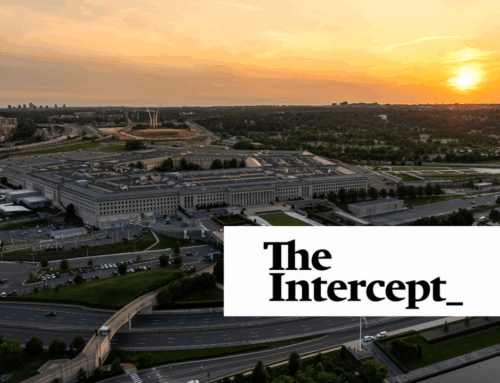Yesterday came the news that Governor Kristi Noem (R-SD) approved a federal request to send 125 South Dakota National Guard members to the southern border later this year. That’s the way these things are supposed to happen. But you might be thinking, didn’t it already happen? The haze from 4th of July fireworks may have gotten in the way, but what happened last week was that same South Dakota Governor announcing she was accepting funds from a Republican mega-donor in Tennessee to pay for roughly 50 South Dakota National Guard members to deploy to Texas. That is just bonkers.
As we asked at the time, “What will these funds be used for? Airlift? Housing? Pay for SD National Guard troops? Is this even legal? Governors exercise a lot of control over their NG troops, but deciding how they’re financed shouldn’t be one of them.”
Our colleague at Project On Government Oversight, Mandy Smithberger, said, “You certainly don’t want our national security priorities up to the highest bidder.”
And then there was this from Arkansas Governor Asa Hutchison, “I would consider it a bad precedent to have it privately funded.”
Bad precedent, bad policy, and potentially illegal.
A recent Pentagon reprogramming request shows how much money deployments like these can actually cost. This particular request covers a previous deployment of Army National Guard soldiers to the southwest border in support of a Department of Homeland Security (DHS) request for assistance. The scope of that mission was significant: 500 National Guard officer work years and 3,700 National Guard enlisted work years. The cost? Just over $420 million. That breaks down to $273 million in pay, allowances, and subsistence and another $147 million in operations and maintenance (O&M) costs. Within just the pay and allowances, $52 million is needed to meet retired pay accrual and another $14.8 in Social Security taxes.
The O&M accounts that need refilling, “include but are not limited to, travel, transportation, supplies, aviation support, life sustainment support and equipment.”
These are the short-term budgetary effects of unpredictable deployments that most people don’t even consider. But we’re a budget watchdog and this is what we do.
The scope of the deployment of South Dakota National Guard troops is likely to be much smaller and, therefore, less expensive than the one described in the pending reprogramming. But it’s instructive to read the request from the Pentagon to move funds from other departmental priorities to pay for this unexpected expense. “Army was directed to support this DHS mission and this mission was not included in Army’s budget request. The requested increase is required for must-fund pay and allowances that the Army is legally required to pay and if not funded may put the Army at risk of an Anti-Deficiency act violation.”
Likewise, the National Guard in South Dakota and the larger Army National Guard weren’t expecting this mission. So, the Governor was going to take a little help from a billionaire. We’re assuming that the billionaire bankroller isn’t needed any longer, since there is a federal request, but the Governor’s press release doesn’t address the question.
What would this “contribution” have paid for? Is it legal for a civilian to cover pay and benefits? We aren’t lawyers, but we sure hope not. Is the billionaire planning on paying for transportation costs and equipment?
And the big questions: where and when will the Army National Guard be forced to cut another priority to “reprogram” funds to cover whatever costs the rich guy doesn’t bankroll?
It’ll take a while but, eventually, there could well be a reprogramming request to cover shortfalls incurred by this deployment. And we’ll be here to write about it.










